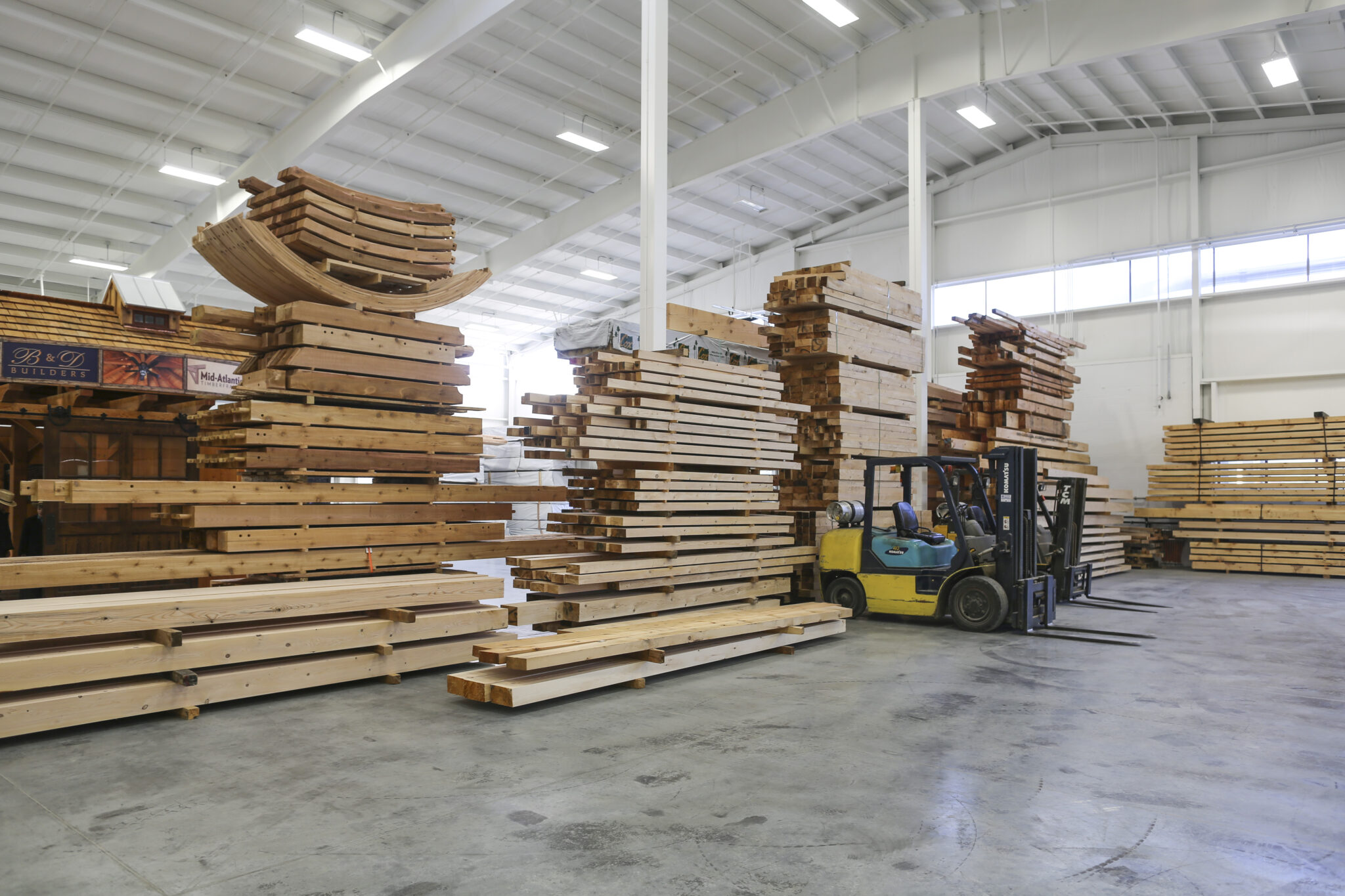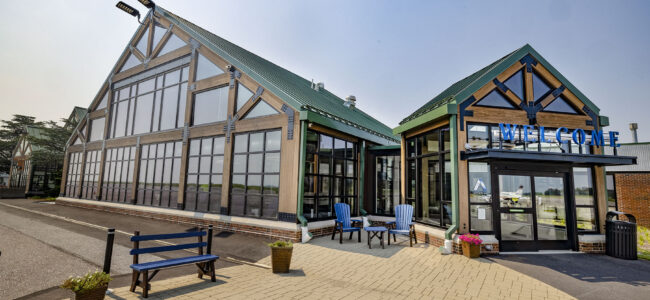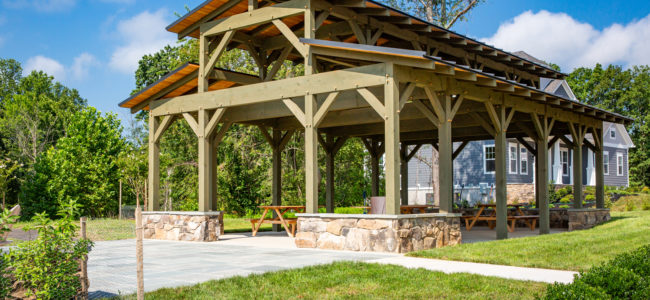Off-Site Construction
Off-site timber construction revolutionizes the traditional building process by efficiently manufacturing timber components in controlled environments. Embracing this method brings numerous advantages, including reduced construction time, minimized waste, and enhanced quality control. At Mid-Atlantic Timberframes, we’re proud to play a pivotal role in the off-site construction process by providing high-quality heavy and mass timber to builders nationwide. To help prospective clients understand this process, we’ve compiled the following list.
How it works: The Process
- Design and Engineering: The first step involves designing the timber frame structure and creating detailed engineering drawings. Architects and engineers work together to ensure that the design meets all requirements, adheres to building codes, and maximizes the efficiency of off-site construction.
- Material Selection: High-quality timber is selected based on the project’s requirements and design specifications. Timber species that offer the desired strength, durability, and aesthetic appeal are chosen.
- Preparation of Components: In the off-site facility, the timber is cut, shaped, and prepared to create the various components of the timber frame, including beams, posts, trusses, and panels.
- Joinery and Assembly: Skilled craftsmen use traditional joinery techniques or modern connectors to assemble the timber components into pre-engineered sections. This ensures precision and consistency in the construction process.
- Quality Control: Rigorous quality control checks are performed throughout the assembly process to ensure that all components meet the required standards and fit together accurately.
- Finishing and Treatments: Timber components may undergo finishing processes, such as sanding and applying protective coatings or preservatives, to enhance their appearance and durability.
- Transportation: Once the timber frame components are ready, they are transported to the construction site. Careful packaging and transportation ensure that the components remain in excellent condition.
- On-Site Assembly: On-site, the pre-fabricated timber components are carefully lifted into place and assembled by skilled workers. This process is often faster and requires fewer workers compared to traditional on-site construction.
- Integration with Other Systems: Once the timber frame is in place, other building systems such as electrical, plumbing, and HVAC are integrated into the structure.
- Finishing Touches: The final stages involve finishing the interior and exterior surfaces, including roofing, cladding, and interior fittings.
Partnering with Mid-Atlantic Timberframes
If you’re looking to move forward with a project or get some questions answered, MATF has the resources for you. Our experienced team is ready to take the proper steps to bring your vision to life and our website features a variety of information ideal for the perspective buyer. We invite all those interested to take the next steps in their timber frame journey by contacting us via their preferred method. And for those interested in furthering their research, we invite them to browse our additional Resource pages, blog, and the Our Work page to view some of our recent projects.
CONTACT US OUR WORK
Featured Projects

Lititz, PA

Ashburn, VA
Ashburn, VA – This modern timber frame pavilion is a shaded oasis for outdoor gatherings. Located on the Willowsford Conservancy grounds, the pavilion supports the conservancy’s mission of integrating…